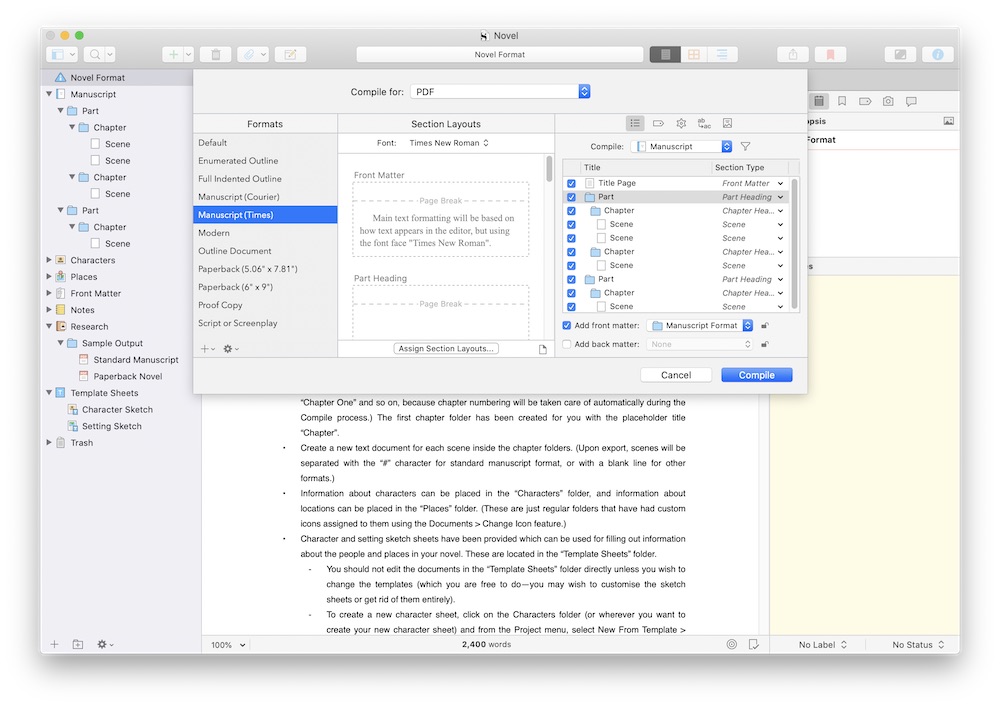

The first section focuses on Draft targets and what to include when you’re compiling and creating a deadline date.


A window will open and you’ll see that it’s divided in two sections, for this example, I have it as A Pig Named Moe (yes, I abandoned Under the Hazelnut Tree) and Session Target: To set a draft or session target, go to Project->Show Project Targets (Windows users, Project->Project Targets). Conversely, if you remove text files it doesn’t decrease the word count, BUT it does affect it the draft total. Scrivener counts only those words toward your target, and if you’re importing text into the Binder it doesn’t increase the word count within the session. A few things to note: project targets only work in the draft section. A session target is for that current writing session, in other words the chapter/scene you’re working on. Sessions, by default, reset at midnight, but Scrivener provides you with the option to reset it wherein a session can last more than one day. A draft target is theword count goal for the entire project. Let’s first define a few terms that might be obvious. Whether you’re working on an article that can’t be more than 700 words or whether you’ve embarked on writing a novel that’s 100,000 words, project targets can help keep you on track, but also provide a visual feedback or incentive. Scrivener provides a chockfull of features that allows you to set targets and monitor your progress. So let’s take a look at working with Project Targets. If you’re like many writers, you probably have a set writing routine with a fixed number of words to write daily, but what if you need to know how close you are to completing your project or how many words you’ve subtracted during a revision process? This lesson focuses on setting Project Targets, which seems to beĪpropos considering it’s almost the start of a new month and the summer.


 0 kommentar(er)
0 kommentar(er)
